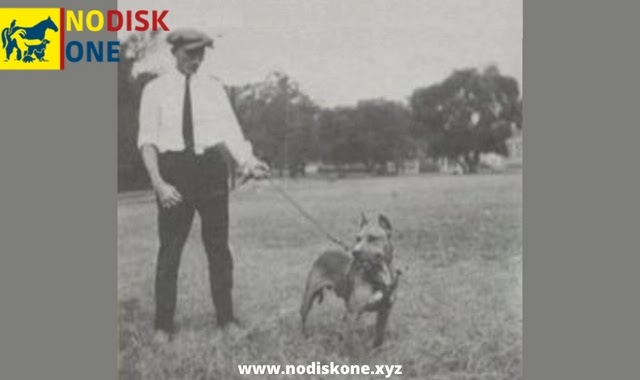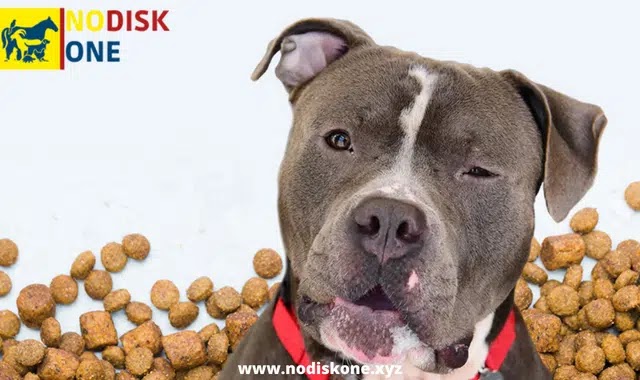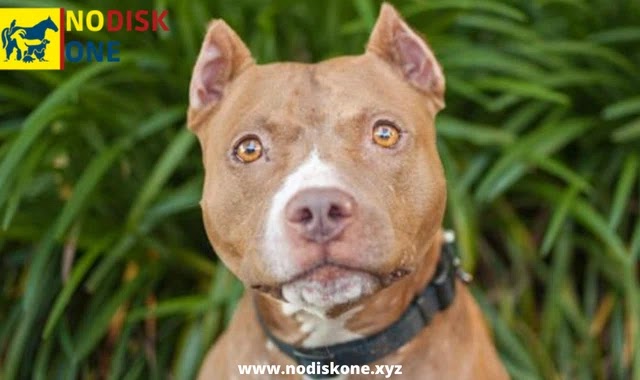The first challenging aspect of our relationship with these dogs is recognizing a pit bull. Pit bulls are not recognized as a separate dog breed by the American Kennel Club, the largest and most influential U.S. breed registry, like Labrador retrievers and dachshunds. The United Kennel Club and the American Dog Breeders Association both recognize the American pit bull terrier, whose appearance many non-breeders would associate with the "pit bull" breed.
Pit bulls can also be used to refer to other dog breeds that are recognized by various breed registries. These include the American Staffordshire terrier, the Staffordshire bull terrier, and mixes of these breeds, according to the rescue, adoption, and advocacy group Love-A-Bull. Pit bulls are frequently included in the category of American bullies. Even the Bull terrier and the American bulldog may fall under this heading in the eyes of some.
 |
| Pitbull Dogs |
Because of some of their physical characteristics—they frequently have stocky builds, wide mouths, somewhat square-shaped heads, and short, smooth coats—other dogs wind up falling under the pit bull category. Although their sizes vary, they typically weigh between 30 and 85 pounds. These characteristics, even when combined, are not particular to pit bulls. As a result, the term "pit bull" is rather vague and can be used to describe dogs of all different breeds, sizes, and shapes. Pit bulls are ultimately more of an idea than a breed, and there aren't many more potent or divisive canine ideas.
- Note: Every dog is an individual, just like every human, with particular genetics, life experiences, and environments that affect their behavior. Pay attention to what your particular pet is trying to tell you about their needs—beyond what you might anticipate given the breed.
This is an informative article. Nodisk One is not permitted to make a diagnosis or recommend any form of veterinary care. If your pet is in pain or ill, we recommend that you take him to the vet.
Pitbull breeding history
According to the United Kennel Club, breeders wanted to combine "the gameness of the terrier with the strength and athleticism of the bulldog" when they created the majority of dogs that are typically referred to as pit bulls in the United Kingdom. When dogs were trained to attack a chained bull or bear, bull-baiting, a cruel but well-liked sport, was practiced. The Olde English bulldog, which resembled the contemporary American bulldog, was used for this purpose.
 |
| Pitbull breeding history |
Certain characteristics were prized in this sport, including muscularity, strong jaws, and being small and close to the ground. Dogs were used in other cruel sports that replaced the baiting of bulls and bears after the British Parliament outlawed it in 1835, first pitting dogs against rats and then other dogs. Olde English bulldogs were crossed with terriers because these sports required dogs with greater speed and agility than baiting.
While aggression toward other animals may have been a trait selected for by breeders and instilled through training, aggression toward humans would frequently result in a dog being killed. This is because all of these sports required humans to be able to handle the dogs safely.
 |
| The American watch dog |
Pit bulls were introduced to the U.S. by British immigrants, where they first gained popularity as working-class dogs before becoming popular with all breeds. For many years, pit bulls served as the standard for "regular" dogs. Actually, the pit bull was for a very long time both a very popular family dog and a sort of American canine hero. During World War I, pit bulls were adopted as the mascot of the American military and were prominently featured on propaganda posters. We're not looking for trouble, but we're ready for it, reads the caption above a white dog wearing a cheery cap in one Navy poster. Sergeant Stubby, a pit bull, received a decoration for valor while delivering messages during the conflict.
Although, contrary to popular belief, the term "nanny dogs" wasn't actually coined until the 1970s, according to Bronwen Dickey, author of Pit Bull: The Battle Over an American Icon, who also emphasizes that no dog should be left alone with a baby, pit bulls were a common sight in homes and served as babysitters. Buster Brown's sidekick was a pit bull named Tige, and Petey, the mascot of the Little Rascals on the television program Our Gang, became well-known to audiences of all ages. America's dog was a pit bull. They still are, just in a much more complicated way.
Pitbull dogs in America
The United States of America witnessed the emergence of a number of American hybrid pitbull types, with the increase in the people's demand for their acquisition and breeding. In the late eighties, pitbull dogs were estimated at about 2% of the total dogs bred in them, and in 2004 their numbers increased to an estimated two million dogs of different pitbull breeds.
Pitbull breed characteristics
Pit bull terriers typically have a warm and loving disposition. They frequently have a very playful temperament and enjoy playing games and participating in dog sports with their owners. They typically adapt well to training as well. Continue reading to learn more about the characteristics of the Pitbull breed.
 |
| Pitbull breed characteristics |
Pitbull Adaptability
 |
| Pitbull Adaptability |
Adapts Well To Apartment Living
Contrary to popular belief, a small size does not automatically make a dog suitable for an apartment. Many small dogs are too excitable and yappy to live in a high building. A good apartment dog should be quiet, low-energy, relatively calm indoors, and courteous to the other residents.
Good For Novice Owners
Simply put, some dogs are easier than others; they learn faster and are generally more laid back. Additionally, they are strong enough to recover from your errors or inconsistent behavior. It may be more difficult for a novice dog parent to handle dogs who are highly sensitive, independent thinkers, or assertive. When choosing your new dog, consider your prior dog-owning experience to get the best match.
Sensitivity Level
While some dogs take even a dirty look to heart, others will let a firm warning roll off their backs. Low-sensitivity dogs, also known as "easygoing," "tolerant," "resilient," or even "thick-skinned" dogs, can handle a noisy, chaotic home, a louder or more assertive owner, and a variable or erratic routine better. Do you have young children? Do you frequently host dinner parties? Do you play in a garage band? Do you lead a busy life? Choose a dog that is not sensitive.
Tolerates Being Alone
Some breeds develop strong bonds with their families and are more likely to worry or even panic when their owner leaves them alone. An anxious dog may bark, whine, chew, and engage in other destructive behavior that may result in havoc. When a family member is present during the day or if you can take the dog to work, these breeds thrive.
Tolerates Cold Weather
Breeds like greyhounds, which have extremely short coats and little to no body fat, are more susceptible to the cold. Dogs with a poor tolerance for cold weather should be kept indoors in cool climates, and they should always have a jacket or sweater with them on chilly walks.
Tolerates Hot Weather
Dogs with double-coated, thick coats are more prone to becoming too hot. Short-nosed breeds like Bulldogs and Pugs are also affected because they cannot sweat as effectively. If you choose a breed that is sensitive to heat, you must keep your dog inside with you on warm, muggy days, and you must exercise your dog with extra care in the heat.
Pitbull Trainability
 |
| Pitbull Trainability |
Easy to Train
Dogs are better at quickly creating an association between a cue (like the word "sit"), an action (like sitting), and a result (like receiving a treat). Other dogs require more training repetitions, time, and patience. Many breeds are intelligent, but they tend to train with a "What's in it for me?" mentality. In this case, you'll need to use rewards and games to teach them to want to follow your instructions.
Pitbull breed Intelligence
In the same way that dogs who were bred to run all day need to exercise their bodies, dogs who were bred for jobs that require judgment, intelligence, and concentration, like herding livestock, need to exercise their brains as well. If they do not receive the necessary mental stimulation, they will create their own work, typically using activities that you will find objectionable, like digging and chewing. Dog sports and careers like agility and search and rescue, as well as obedience training and interactive dog toys, are effective ways to exercise a dog's brain.
Potential For Mouthiness
Mouthiness refers to a propensity to nip, chew, and play-bite (a soft, generally painless bite that doesn't puncture the skin), which is common in most breeds during puppyhood and in Retriever breeds at all ages. Mouthy dogs need training to learn that chewing on chew toys is acceptable but chewing on family members is not. Mouthy dogs are more likely to hold or "herd" their human family members with their mouths. Mouthy breeds frequently enjoy a good chew on a toy that has been filled with treats and kibble as well as a game of fetch.
Pitbull breed Prey Drive
Terriers and other hunting-bred dogs have an innate desire to pursue and occasionally kill other animals. That instinct can be triggered by anything speeding by, including cats, squirrels, and possibly even moving vehicles. Dogs that enjoy chasing must be leashed or kept in a fenced area when they are outside, and your yard needs a high, sturdy fence. These breeds typically don't do well in households with smaller animals that might be mistaken for prey, like cats, hamsters, or small dogs. On the other hand, breeds that were developed for bird hunting typically don't chase, but you may find it challenging to get their attention when birds are flying nearby.
Tendency To Bark Or Howl
Some breeds bark more frequently than others. Think about how frequently the dog barks or howls when selecting a breed. Would you find a hound's distinctive howls soothing or infuriating if you were thinking about getting one? Will your dog be constantly on guard in a city full of untrustworthy "strangers" if you're thinking about getting a watchdog? Will the wildlife in the area literally drive your dog crazy? Do you reside in a quiet neighborhood? Do you have any nearby neighbors? Then you might want to pick a dog that is quieter.
Wanderlust Potential
Breeds vary in their level of independence. Siberian Huskies and other Nordic breeds of dogs were developed for long-distance travel, and given the chance, they'll chase after anything that piques their curiosity. Even if it means leaving you behind, many hounds simply have to follow their noses—or that bunny that just ran across the path.
Pitbull Physical Needs
 |
| Pitbull Physical Needs |
Pitbull breed Energy Level
Dogs with a lot of energy are always prepared to take action. They were originally bred to do a specific canine job, like herding livestock or retrieving game for hunters, so they have the endurance to work all day. They require a lot of physical activity and mental stimulation, and they are more likely to jump around, play, and explore any new sounds or smells. The canine equivalent of couch potatoes are dogs with low energy levels, truly happy to doze off all day. Consider your own level of activity and lifestyle when choosing a breed, as well as whether you'll find a boisterous, active dog energizing or annoying.
Pitbull breed Intensity
A dog that is vigorous may or may not be energetic, but they do everything they do with vigor: they pull on the leash (until you teach them not to), try to push through barriers, and even take big gulps of food and liquid. These dynamos require extensive training to develop good manners, so they might not be the best choice for a household with young children or an elderly or frail person. A dog with low energy, on the other hand, has a more reserved outlook on life.
Pitbull breed Exercise Needs
Some breeds can do just fine with a leisurely evening stroll. Others, particularly those that were bred to perform physically demanding jobs like herding or hunting, require daily, vigorous exercise. These breeds may gain weight if they don't get enough exercise and may release their pent-up energy through undesirable behaviors like barking, chewing, and digging. For people who enjoy being outside and active or who want to train their dog to compete in a high-intensity dog sport like agility, breeds that require a lot of exercise are a good choice.
Pitbull breed Potential For Playfulness
These breeds may gain weight if they don't get enough exercise and may release their pent-up energy through undesirable behaviors like barking, chewing, and digging. For people who enjoy being outside and active or who want to train their dog to compete in a high-intensity dog sport like agility, breeds that require a lot of exercise are a good choice.
Feeding pitbull dogs information
 |
| Feeding pitbull dogs information |
Pitbull puppies food information (Three to six months old)
pitbull puppies should receive three completed meal from you:
- Breakfast: Beat four eggs with a quarter of a kilogram of low-fat milk diluted with warm water, then add a tablespoon of olive oil, and four tablespoons of sugar.
- Lunch: Buy half-kilogram of beef or buffalo liver cut into small pieces, boil them in water with 200 grams of mixed vegetables, chop a clove of garlic and add to it, a cup of white rice, a loaf of the local bread, or a spoonful of olive oil.
- Dinner: Dinner will consist of a loaf of bread, an egg, and eight tablespoons of beans.
Age six months to a year
Pitbull dogs should have two completed meals provided by you when they are between the ages of six months and one year:
- Breakfast: scrambled eggs or five boiled eggs, three cheese triangles, a loaf of regional bread, and one and a quarter kilograms of dilutable-milk with water.
- Lunch: 400 grams of mixed vegetables, a loaf of the local bread, or a cup of rice with half a kilogram of liver or boiled meat.
1 year old
- A one meal only, which is a kilogram of liver or meat or boiled pardo structures in the previous way, taking into account the provision of the amount of bread and vegetables.
- Note: To maintain the health of the dog's stomach, food is not served cold or hot to a large extent, taking into account avoiding placing bones in the diet when young after growing. The bones are placed to aid in the growth of teeth and jaw muscles, in addition to training him to spend his needs in a designated dirt spot, such as a sandbox or newspaper pages.
What are the facts about pit bulls?
Once used for bear baiting and other bloodthirsty forms of entertainment, pit bulls have since become valuable companions and family friends. Despite their scary reputation, pit bulls can be the most caring and affectionate dogs with the proper training. Some even call them nanny dogs, for their kindness to children. Are you prepared to explore more facts about Pit Bulls?
 |
| What are the facts about pit bulls? |
What are the 5 fast facts about a pitbull?
These 5 fast facts about a pitbull will help you learn more about these fascinating animals:
1- Pit bulls usually measure between 43 and 48 cm.
2- They also usually weigh between 14 and 41 kg.
3- On average, they can live up to 14 years with good care.
4- About 6% of all pet dogs in the world are pit bulls.
5- Hospital statistics show that pit bulls cause about half of all dog bite incidents.
Lets Learn more about these fascinating animals with these facts about pit bulls.
What are the 10 essential facts about a pitbull?
Let's gain more knowledge about these fascinating creatures, With these 10 essential facts about a pitbull dogs:
1- All pit bulls are descended from British bull and terrier dogs brought to the United States in the 1870s for dog fighting purposes.
2- Beginning in 1874, state after state began banning dogfighting.
3- Breeders formed the United Kennel Club after the American Kennel Club refused to accept them for supporting dog fighting.
4- In 1935, the United Kennel Club recognized Staffordshire Terriers as the first pit bulls.
5- They renamed them American Staffordshire Terriers to differentiate the dogs from their British counterparts.
6- Since 1991, it has been illegal to own pit bulls in England and Wales.
7- A 2000 study by the Center for Disease Control and Prevention (CDC) found that pit bulls cause one-third of all dog bite-related deaths.
8- Statistics from the 2000s estimate that up to 1,500 dogs die each year in organized fights.
9- About 40,000 people are involved in these organized fights.
10- In 2013, some insurance agencies in California dropped coverage for pit bull bites.
What are the 5 interesting facts about a pitbull?
Here are 5 interesting facts about Pit Bulls that you should be aware of:
01- Other countries that prohibit the ownership of pit bulls are Australia and Germany.
02- Alaska, American and United Airlines all refuse to transport pit bulls for health reasons.
03- Air France and Delta Air Lines refuse to transport pit bulls for safety reasons.
04- Criminal groups use pit bulls to guard illegal drugs and as attack dogs.
05- US Customs and Border Protection also uses pit bulls as sniffer dogs.
Fear and misconceptions about these lovable and adoptable dogs have increased as a result of reports of Pit Bulls attacking people and the prominence of the breed in dog fighting circles. All dogs have the potential to bite, and these attacks are almost always the fault of careless owners. Any dog who has been subjected to abuse, neglect, or attack training may exhibit aggressive behavior; this characteristic is not exclusive to Pit Bulls or any other breed.
Pit bull information (FAQ)
 |
| Pit bull information (FAQ) |
Are Pitbulls good family dogs?
The American Pit Bull Terrier or the English Pit Bull Terrier makes a wonderful playmate for children when raised with the right training and socialization. Despite being loving and gentle with people, he frequently makes a bad guard dog because of his tail-wagging eagerness to greet the person at the door.
Is a pitbull a house dog?
Pit bulls are typically used as house dogs. Pit bulls' short coats and low level of shedder is one of their best qualities. Obviously, this is the best option if you don't want to deal with a furry house. It also implies that pit bulls are mostly house dogs.
What 2 dogs make a pitbull?
The majority of pit bull-like canines are descended from the British Bull and Terrier, a dog fighting breed created in the 19th century from crosses between the Old English Terrier and the Old English Bulldog.
How smart are pit bulls?
The Staffordshire Bull Terrier and American Staffordshire Terrier, two breeds of Pit Bulls, have average to above average intelligence. In terms of working intelligence and obedience, they rank at positions 48 and 94, respectively.
What owning a pitbull says about you?
Pit bulls have a strong desire to please and are loyal to their family and friends. Owners of pit bulls are strong, brave, and never stop protecting the people they care about. They are good parents and grandparents because they like being around kids.
How much is a pit bull dog?
If you want a pedigreed dog or not, it will depend on your preferences. In this country, you can find generic pit bulls at almost every shelter or foster organization for just the cost of an adoption fee; recognized breeds can cost anywhere from $1,000 to $3,000 for a puppy.
How protective are pit bulls?
Pit bulls are known for having powerful defensive instincts. They are vigilant and watchful, so visitors to the family or home might be viewed with suspicion. They are sensitive dogs, though, and they respond to how their family members act.
What is special about Pitbull?
They are very loving, devoted, easy to care for, hilarious, trainable, and possess strong personalities. They are the model of what a wonderful dog should be! Pitbulls are incredibly devoted, loving, and affectionate animals. Their joie de vivre is genuinely contagious.
How fast can Pit Bull run?
Over short distances, Pitbulls can reach speeds of up to 30 miles per hour, making them one of the fastest dog breeds over short distances. For a run of a few miles, you can expect your Pitbull to average 13 miles per hour. Of course, this depends on how fast you travel, and your Pitbull will almost surely be able to match your speed. It is an athletic breed of dog, the American Pit Bull Terrier. Due to their agility, strength, and general energy, pit bulls make amazing canines. A pit bull can keep running at paces of around 25 to 30 mph, or around 40.2 to 48.3 km/h. 8.
In Conclusion: A Pit Bull Served In The Union Army During The American Civil War
Born in 1861, Sallie Ann Jarrett served as the mascot of the Union Army's 11th Pennsylvania Infantry Regiment. Sallie made history at the Battle of Gettysburg when she guarded a group of wounded soldiers who were cut off from the rest of their forces for days. She remained with her regiment in further battles and was eventually killed in action by a gunshot at the Battle of Hatcher's Run.
 |
| A Pit Bull Served In The Union Army During The American Civil War |
Her fellow soldiers buried her on the battlefield before the fighting even stopped. When veterans of his regiment erected a memorial at Gettysburg in 1890, they included a sculpture of Sallie in the monument.
Only credible sources, such as peer-reviewed studies, are used by Nodisk One to substantiate the information in our articles.

Comments